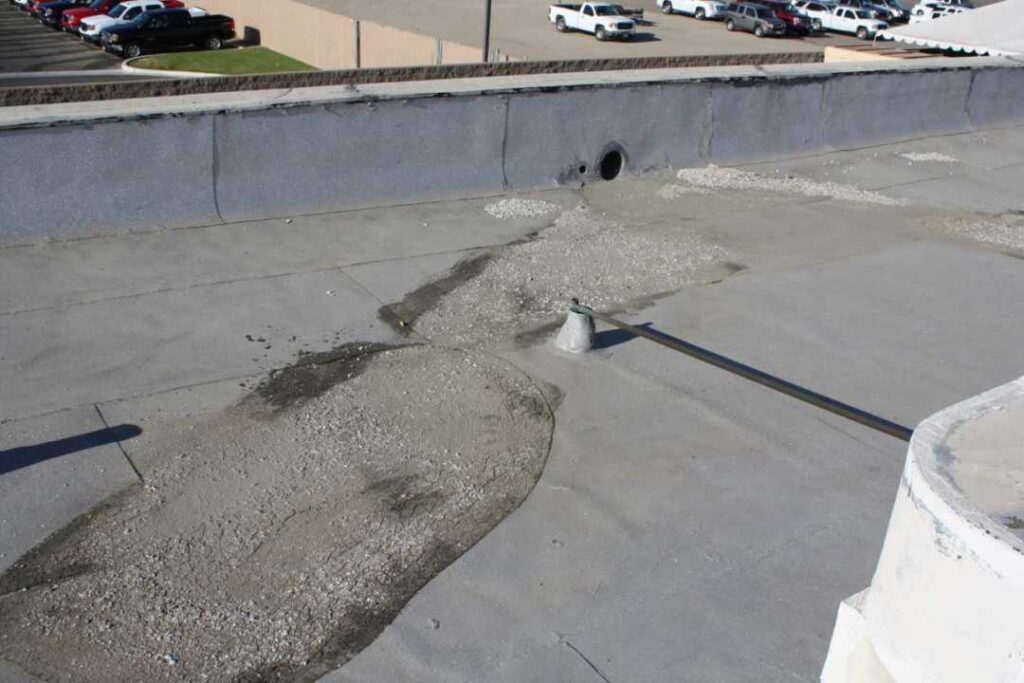At some point, just about every commercial roof will encounter a leak. It’s inevitable. It’s no time to sit on the sidelines because the quicker you deal with it, the better off you’ll be in the long run.
4 COMMON FAILURE POINTS
- Penetrations. Penetrations are holes cut to accommodate HVAC components, vent pipes, drains, skylights, roof hatches, antennas, etc. They are typically the weakest points of the roof, making them also the most vulnerable spots for water to find its way in. It stands to reason they must be properly sealed and maintained.
- Seams. Seams are located where sheets of roofing material (whether it’s single-ply, metal, built-up, etc.) come together. Fasteners, or even the seams themselves, can separate over time due to normal wear-n-tear or harsh weather conditions, allowing water to enter the building.
- Ponding water. Ponding water is rainwater collected on a roof that has not drained within 48 hours following the weather event. If ponding water exists, it can be a sign of issues with a roof’s drainage system.
- Membrane failure. Commercial roof membranes can crack, split, tear, or expose open laps. The causes include changes in temperature, excessive wear, UV penetration, wind, debris, freeze-thaw cycles and more.

Tackle the problem at hand. Repairs are the lowest cost option and quickest way to resolve a commercial roof leak. Choosing that as a first course of action falls within the best-practice philosophy of extending the useful life of the roof.


